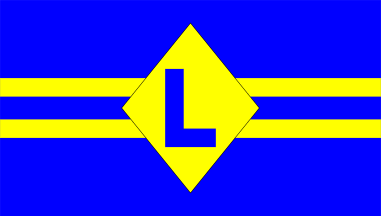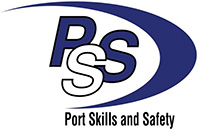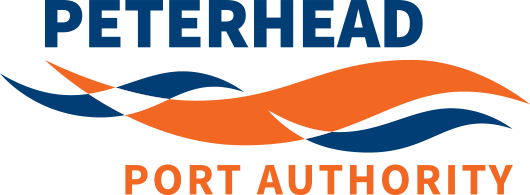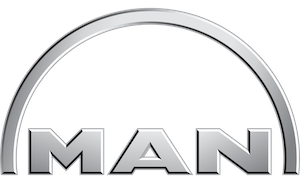Pilot ladder man ropes are very much a ‘marmite’ issue in the piloting world. Some maritime pilots swear by them whereas others prefer keeping three points of contact with the ladder. Man ropes can prove effective in large swells as it allows the pilot to perform a controlled decent until they meet the pilot boat as can be seen in this video.
Pilot Ladder Man Ropes Requirements
Whatever the pilots preference man ropes are designed for a departing pilot rather than one who is boarding so they can be kept stored in a seamanlike fashion and only deployed when the pilot states he wishes to use them.
Pilot ladder man ropes are a SOLAS requirement so every vessel must carry them. SOLAS CH V Regulation 23 Part 7 covers this requirement
7 Associated equipment
7.1 The following associated equipment shall be kept at hand ready for immediate use when persons are being transferred:
.1 two man-ropes of not less than 28 mm and not more than 32 mm in diameter properly secured to the ship if required by the pilot; man-ropes shall be fixed at the rope end to the ring plate fixed on deck and shall be ready for use when the pilot disembarks, or upon request from a pilot approaching to board (the manropes shall reach the height of the stanchions or bulwarks at the point of access to the deck before terminating at the ring plate on deck);
.2 a lifebuoy equipped with a self-igniting light;
.3 a heaving line
So from this we can see the man-rope is required to be
Two of them
Between 28mm – 32mm
Reach the height of the stanchions
Be secured to the deck
Further guidance regarding man ropes can be found in the global standard for pilot ladders ISO 799. In ISO 799:3 ‘Ships and marine technology, Pilot ladders, Part 3: Attachments and associated equipment’ section 4 the additional requirements are
That they shall be grade 1 manila rope.
The ropes shall be clean.
Man-ropes shall be tagged and inspected at intervals not exceeding those required for pilot ladders (before and after use by a responsible officer and every three months by a senior officer)
Man-ropes shall be stored in accordance with any instructions issued by the rope manufacturer. In the absence of rope manufacturer instructions, they should be stored in a dry well-ventilated area. They should be kept free from contamination by cargo or chemicals and washed with fresh water if they require cleaning and leaving to air dry.
Man-ropes shall be free of knots.
The ends of the rope shall be seized or whipped to prevent fraying.
The key thing from ISO 799 is the requirement to tag and inspect the ropes regularly. Man ropes are as essential to maritime pilot safety as the ladder itself and need to be treated with the same care and attention. They should never be dragged over the deck or thrown into a deck locker. We highly recommend having a dedicated storage area for all equipment related to pilot ladder and gangway safety that is free from the storage of paints, chemicals and cargo handling equipment.
Manropes should be hung in a seamanlike fashion to allow them to dry and prevent rot or mildew forming. Man ropes from a reputable supplier will come with a permanent tag that identifies the item and it’s date of manufacture. This allows for documented inspections of the man ropes and it is easy to see how old the ropes are when deciding on purchasing replacements.
The Impact of NCSR 10 on Man Rope Safety
The 10th session of the IMO Sub-Committee on Navigation, Communications and Search and Rescue (NCSR 10) is currently looking at changes to SOLAS V/23 and this may include the requirement to replace or retest man-ropes in an identical fashion to that of pilot ladders (currently every 30 months).
In our opinion this will bring consistency to man rope replacement where it does not currently exist. Whilst man-ropes do not get the same level of abuse that a pilot ladder does they are vital components of the pilot transfer arrangement and as such intrinsic to the safety of pilots who choose to use them. A key issue with Grade 1 manilla is that global regulation has made illegal some chemicals formerly used in the rot treatment of natural fibre ropes. This has made modern manilla more prone to rot and mildew so more frequent replacement is strongly recommended.
These changes if approved by IMO will form part of the 2026 revision to SOLAS regulations and come into force in 2028.
Regardless of the changes we strongly recommend that man ropes are tagged and regularly inspected as per ISO 799 or the ships documented inspection regime as for ladders and replaced regularly.
The cost of two high quality man ropes at the time of writing this article (Jan 2024) is $300-400. If replaced EVERY 30 months the cost is around 45 cents a day per pair of . It’s a small price to pay to guarantee the safety of your pilot, ensure compliance and behave in a seamanlike manner.
UPDATE: In November 2023 Australia’s mid west ports of Geraldton introduced a maximum age of manropes of 12 months following a spate of incidents involving failing manropes during pilot transfer.
With the Fathom Safety Pilot Ladder Management Service (E-2-E) we not only look after your the management of your pilot ladders but we also ensure associated equipment including man ropes are in good condition and replaced as required. Contact us at [email protected] to find out how we can make pilot transfer as safe and stress free as possible!















